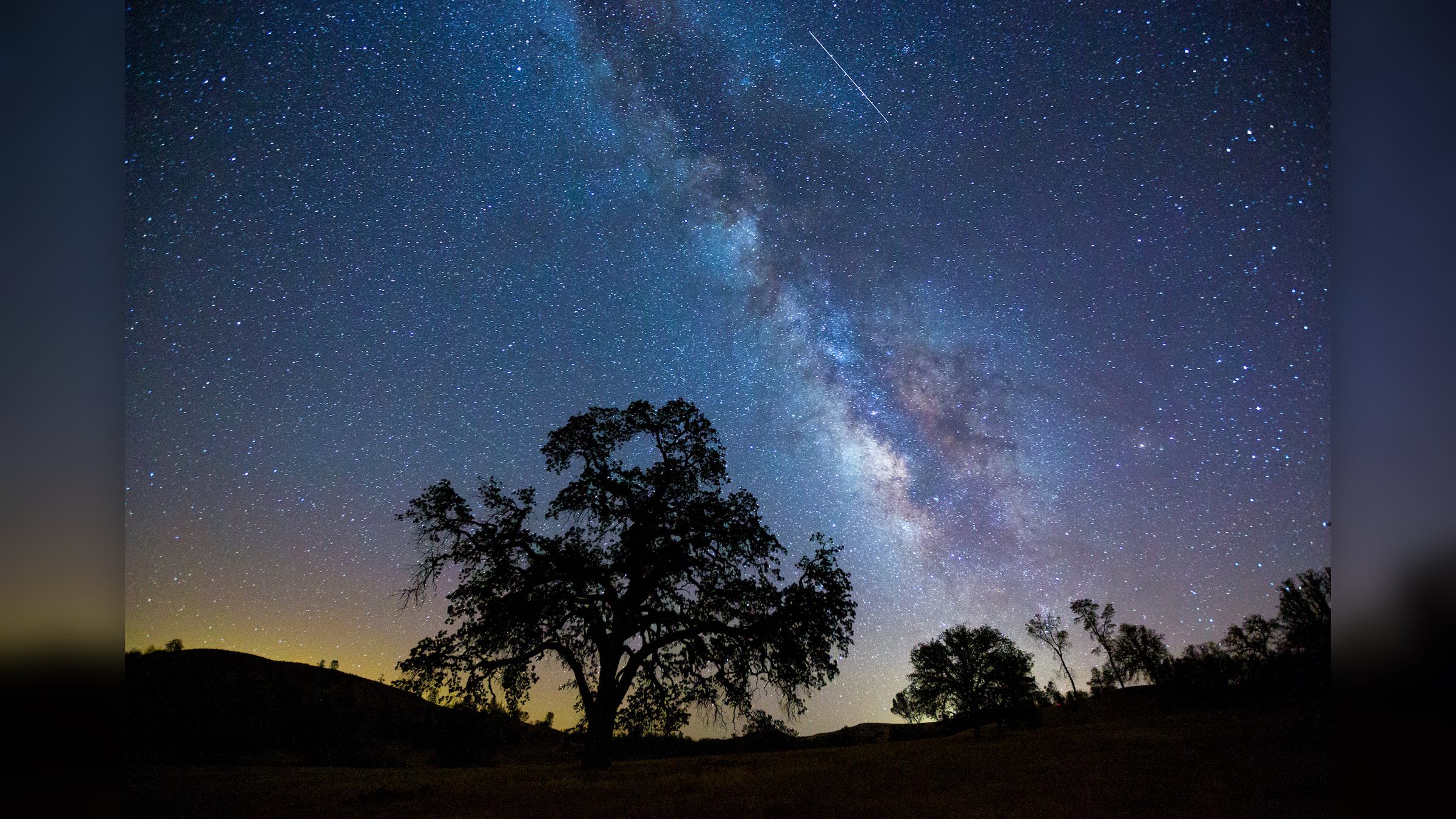How to watch shooting stars in the Perseid meteor shower tonight
At its peak, there will be up to 100 meteors per hour.

If you'd like to wish upon a shooting star, the Perseid meteor shower — a celestial show that starts tonight (July 14) and lasts until mid-August — might be your best bet.
Every summer, from July 14 to Aug. 24, the Northern Hemisphere is blanketed with a gleaming barrage of "shooting stars," or meteors, tiny bits of space rock and dust that burn up in Earth's atmosphere. The Perseid meteor shower is one of the most famous meteor showers, as the night sky lights up with burning meteors when Earth passes through the dusty remnants left behind by the comet Swift-Tuttle, according to NASA.
The Perseid meteor shower peaks from Aug. 11 to 13, when skygazers can see up to 100 meteors per hour (much more than the average five meteors per hour visible on an average night), but it's possible to catch a multitude of gleaming meteors before and after those dates, especially in the pre-dawn hours, NASA reported.
Related: 15 amazing images of stars
Comet 109P/Swift-Tuttle was discovered in 1862 by Lewis Swift and Horace Tuttle, who identified it independently of each other, according to NASA. The large comet's nucleus (or "head") is 16 miles (26 kilometers) across, or twice the size of the space rock thought to have killed the nonavian dinosaurs about 66 million years ago. The comet takes 133 years to orbit the sun, and it leaves a long trail of space debris in its wake. The last time it was in our solar system was 1992, and it's not due to return until 2125.
In 1865, the Italian astronomer Giovanni Schiaparelli figured out that the annual Perseid meteor shower occurred because Earth's atmosphere was interacting with debris left behind by comet 109P/Swift-Tuttle, according to NASA.
The Perseids are fast and bright meteors, often leaving long "wakes" of colorful light as they streak across the night sky, NASA reported. Sometimes, skywatchers can even see fireballs, or larger and brighter streaks of light and color that last longer than an average shooting star. Fireballs occur when larger particles of space rock interact with Earth, according to NASA.
Sign up for the Live Science daily newsletter now
Get the world’s most fascinating discoveries delivered straight to your inbox.
The Perseid meteor shower gets its name because of where the shooting stars appear to come from in the night sky: the constellation Perseus. In Greek mythology, Perseus, the son of Zeus and Danaë, slays the gorgon Medusa and rescues Andromeda from a sea monster, according to Encyclopedia Britannica. However, the Perseid meteors will be visible pretty much anywhere in the night sky, Bill Cooke, lead of NASA's Meteoroid Environment Office at the Marshall Space Flight Center in Alabama, previously told Live Science.
Other tips Cooke shared include:
- The key to watching the Perseids is to find a nice, dark spot. "If you're in the middle of the city, the city lights will wash out the fainter [meteors]" Cooke said.
- Give your eyes about 30 to 40 minutes to get used to the dark, night sky. "Don't expect to walk outside and see Perseids," Cooke said. "You may 'dumb-luck out' and catch one, but you're not going to see them until you give your eyes a chance to darken out."
- The Perseus constellation appears in the night sky at about 10 p.m. local time, but most meteors will be visible after midnight, according to Space.com, Live Science's sister site.
- Don't bring binoculars or a telescope, as these will greatly reduce your field of view, Cooke said. "You want to take in as much of the sky as possible, because a meteor can appear anywhere," he said.
- If you want to photograph the Perseids, bring a camera and a tripod. And then, set up your camera to take a long exposure for a duration lasting for a few seconds to a minute. If the exposure lasts for longer than a minute, you'll probably get the rotation of the stars in the photo, which might obscure one of the Perseids, Cooke said.
Originally published on Live Science.

Laura is the archaeology and Life's Little Mysteries editor at Live Science. She also reports on general science, including paleontology. Her work has appeared in The New York Times, Scholastic, Popular Science and Spectrum, a site on autism research. She has won multiple awards from the Society of Professional Journalists and the Washington Newspaper Publishers Association for her reporting at a weekly newspaper near Seattle. Laura holds a bachelor's degree in English literature and psychology from Washington University in St. Louis and a master's degree in science writing from NYU.










